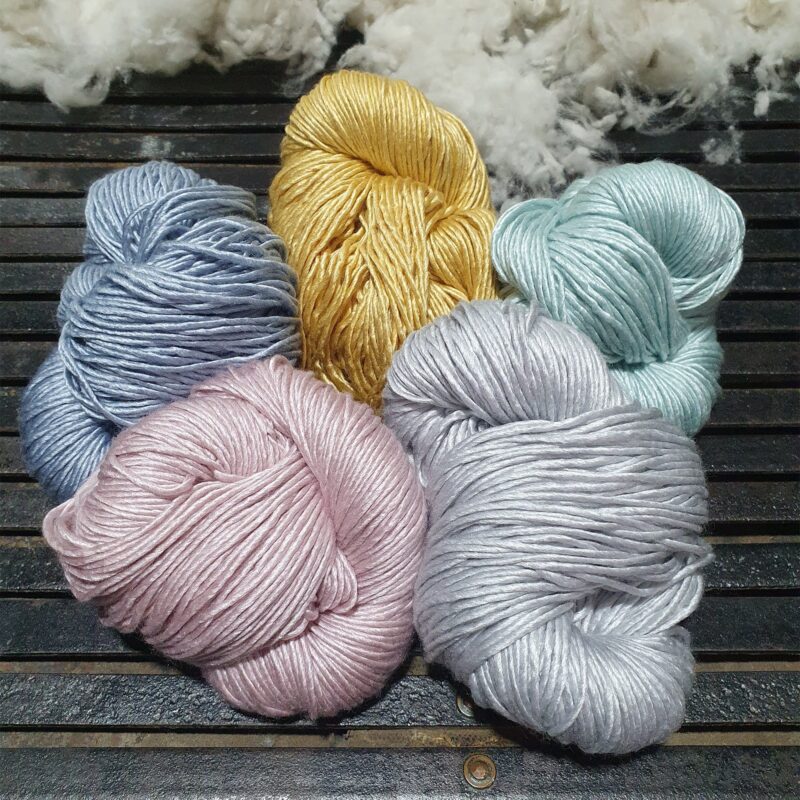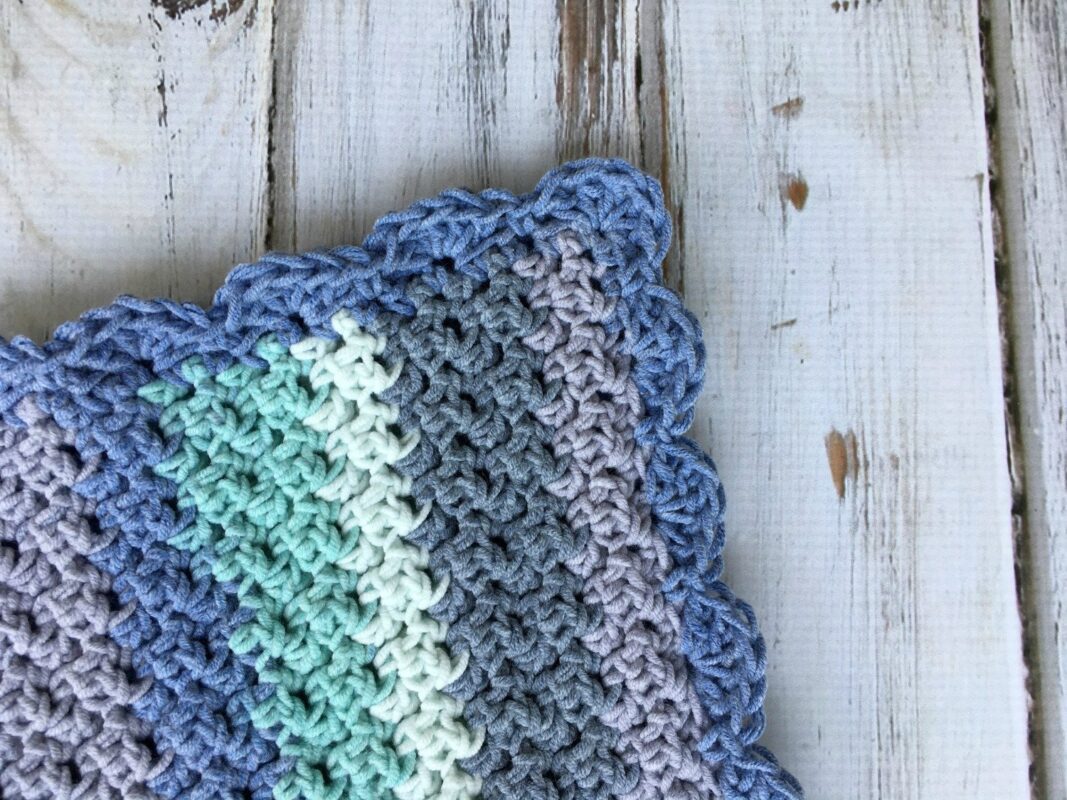How Many Skeins of Yarn for a Baby Blanket
Are you intending to knit a blanket for your little angel but do not know how many skeins of yarn for a baby blanket has? You are looking forward to this gift, because it means a lot to you and your baby. I believe it will bond your family together.
The blanket that you knit for many hours, will be a sacred gift that binds motherhood. And you want it to be special and meaningful, especially in yarn selection and yarn counting for your upcoming plan. This job will help you have more time, control the stages and stages to come.
Don’t worry, as soon as you finish reading this article, you’ll know what you need to do and what’s best to prepare for your plan. Now let’s learn about it! Good luck!
Contents
1. Good Yarn for Children

We all know that children’s skin is very fragile and weak, so it must be cherished and protected. To protect the baby’s skin, the first thing that we should do is choose the right fabric that is good for the baby’s skin. Help children to be able to comfortably work and have a good night’s sleep so that the baby does not cry.
9Blanket chooses the ideal yarn for baby blankets, usually acrylic, cotton or a mixture of the two. Others may also prefer polyester yarn or even alpaca yarn. Wow! Your little angel will surely love this wonderful selection of yours!
When choosing yarn, choose yarn that’s both baby blankets and easy to wash. Because the yarn used for children does not irritate the baby’s skin, it can still wash all stains. The best yarn weights for baby blankets are usually light, medium or even super thick.
2. Overall Yarn Estimate
If you see a pattern you really like but it’s for sports yarn and what you want is wool yarn, how should you solve the problem? You will not need as many gauges as the model requires, you just need to adjust the size down to suit your time and energy conditions.
The first thing you need to know before estimating the amount of yarn needed for a quilting plan is this: the thicker the yarn, the less yarn you will need. Since the larger stitches will take up more space, you will need fewer stitches to make the same amount of blanket than stitches with a smaller amount of yarn.
If you’re planning on knitting a patterned, multi-stitch quilt, you’ll need more yarn than usual. If you intend to work with larger needles with heavier yarns than usual, you may need less yarn. And one more thing to keep in mind is that distance estimates for blankets or anything else tend to be based on standard measures for that yarn’s weight.
With different quilt patterns, the amount of yarn you need to make the blanket will also vary. It can be a bit difficult to get a completely accurate estimate of the yarn count for your blanket, but with the following, you’ll be able to get a clearer picture of what you need to do with the yarn count for your blanket.
3. Thorough Estimate
3.1. How Much Yarn is Needed for a 4-layer Blanket
If you’re new to crocheting a blanket, the safest thing you can do is to follow the pattern according to your baby’s blanket size. If the pattern doesn’t mention specific sizes and labels them, they default to the standard baby blanket sizes. So you have to consider whether you’re crocheting, knitting, or sewing. But here we’ll give you a guide to estimating yarn spacing, here are some of the most common baby blanket sizes:
The smallest baby blanket is a very adorable blanket that measures from 10 x 10 to 12 x 12 inches. There is also a 13 x 28 inch crib blanket and a 14 x 17 inch all-inclusive blanket.
If you really want to know more precisely how much yarn you need. Include the number of yarn patterns, needles and stitches you plan to use for the most accurate calculation possible!
The second way you can determine how many knitting pieces of that size you will need to complete your quilt. By washing the blanket, try washing it when you’re done with the blanket, then measure the actual size of the pattern as well as your gauge.
For example, if you knit a 6×6 inch square and you want a 36×36 inch blanket, you will need 36 squares of that size to make the quilt (6 rows, 6 squares each).
Say, if your 6-inch square takes up 50 yards, then you need 1,800 yards to complete the quilt. Multiply by the number of squares you need to determine your yarn span. Be clear and careful with your swatch and measure the distance it used.
3.2. How Many Yarn Balls are Needed?
The number of yarn balls will depend on the weight of the yarn you use, the style and also the size of the quilt pattern you use as standard. For a baby blanket, assume: The size of the blanket is 42 inches and 36 inches wide. When measuring, I use 4 stitches per inch in a smarter seam. When performing calculations in the calculation, it is possible to round to the nearest integer as it will have some variation due to the number of stitches.
So the amount of wool you will need is:
36 inches x 42 inches = 1512 inches
1512/144 = 10.5 for a 7 ply ball
10.5 × 7 = 77 wool balls
77 – 60 = 17 wool balls
This would be a relative and fairly true metric! And all the above estimates and calculations that we mentioned are only approximate and can hardly be 100% accurate. Because there will be many objective factors affecting the actual calculation compared to the sample you are provided with such as: weight of yarn, stitches, stitching method, knitting tools, … and many other factors.
But with the things that we describe above, it will partly help you save time and avoid waste in the process of buying yarn. please try it!
4. Other Things to Consider
This technique actually computes the same for all blanket types and sizes. Regardless of whether you are going to knit the blanket with yarn or loop. It is always necessary to knit a pattern or buy a set of patterns, which will be more convenient to help you in calculating the yarns for the next project.
If you want a blanket in a different yarn color while you already have a nice one, you can also do the calculation of the blanket available there and use that to give a rough estimate of the amount of yarn you’ll need for the yarn. next project.
And above is all the information that we describe to help you have favorable plans and the right next steps. Hopefully, the information will help you create a blanket that is as beautiful and as beautiful as anything you have thought of! Be persistent to the end, I believe your efforts will be rewarded.
Click Here For The Best Ideas:

